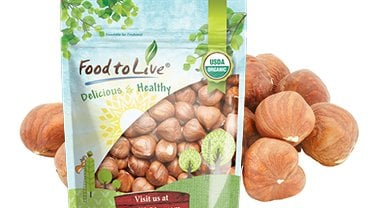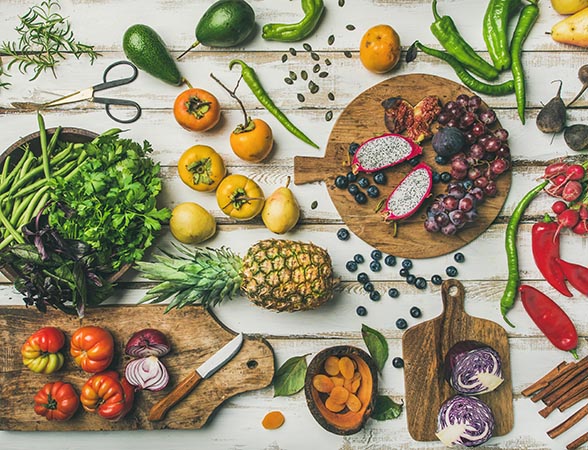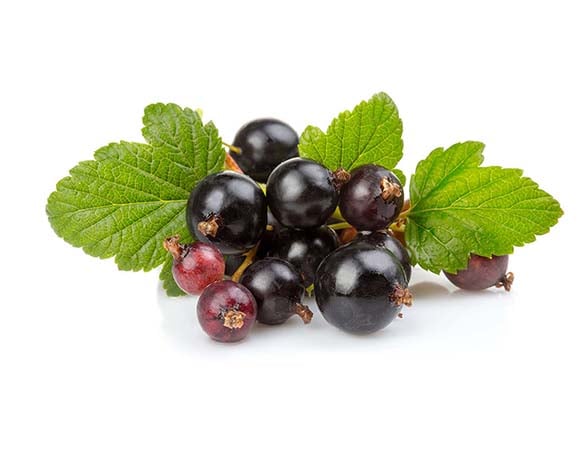November 07, 2023 · Written by Foodtolive Team
How to Read Food Labels
*This article is for informational purposes only and is not intended as a substitute for professional medical or nutritional advice
Understanding food labels is essential for making informed dietary choices when it comes to healthier, nutrient-dense options. Whether you’re striving for a balanced diet or managing specific dietary needs, decoding the nutrition facts on food labels can empower you to make healthier choices. In this blog post, we will provide you with practical examples and useful information on how to read food labels effectively, focusing on healthier products.
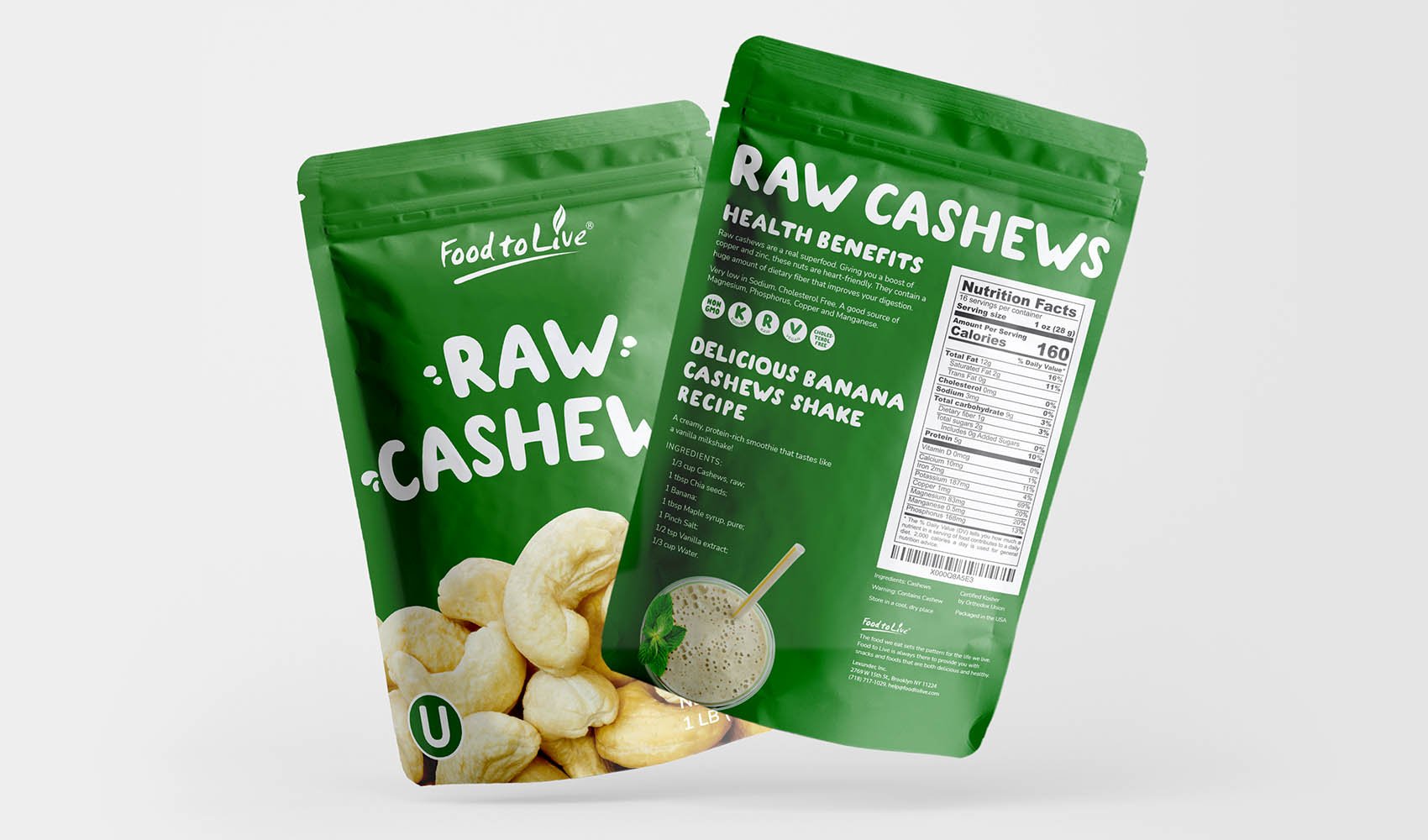
What’s Mandatory on Nutrition Labels?
In the United States, the mandatory list of nutrition facts that must be included on food labels, as regulated by the U.S. Food and Drug Administration (FDA) [1], typically includes the following:
- Serving Size: This is an essential component that provides the serving size and the number of servings per container. It’s crucial for understanding portion control.
- Calories: The total calories per serving help consumers gauge the energy content of the product.
- Total Fat: This includes the total grams of fat per serving and the subcategories of saturated and trans fats.
- Cholesterol: The amount of cholesterol in milligrams per serving is included.
- Sodium: The quantity of sodium in milligrams per serving is indicated.
- Total Carbohydrates: This includes the total grams of carbohydrates per serving, with subcategories for dietary fiber and sugars.
- Protein: The grams of protein per serving are specified.
- Vitamins and Minerals: Some essential vitamins and minerals may be required on the label, such as vitamin D, calcium, iron, and potassium. However, not all vitamins and minerals are mandatory.
- Ingredients List: The list of ingredients in descending order of predominance by weight.
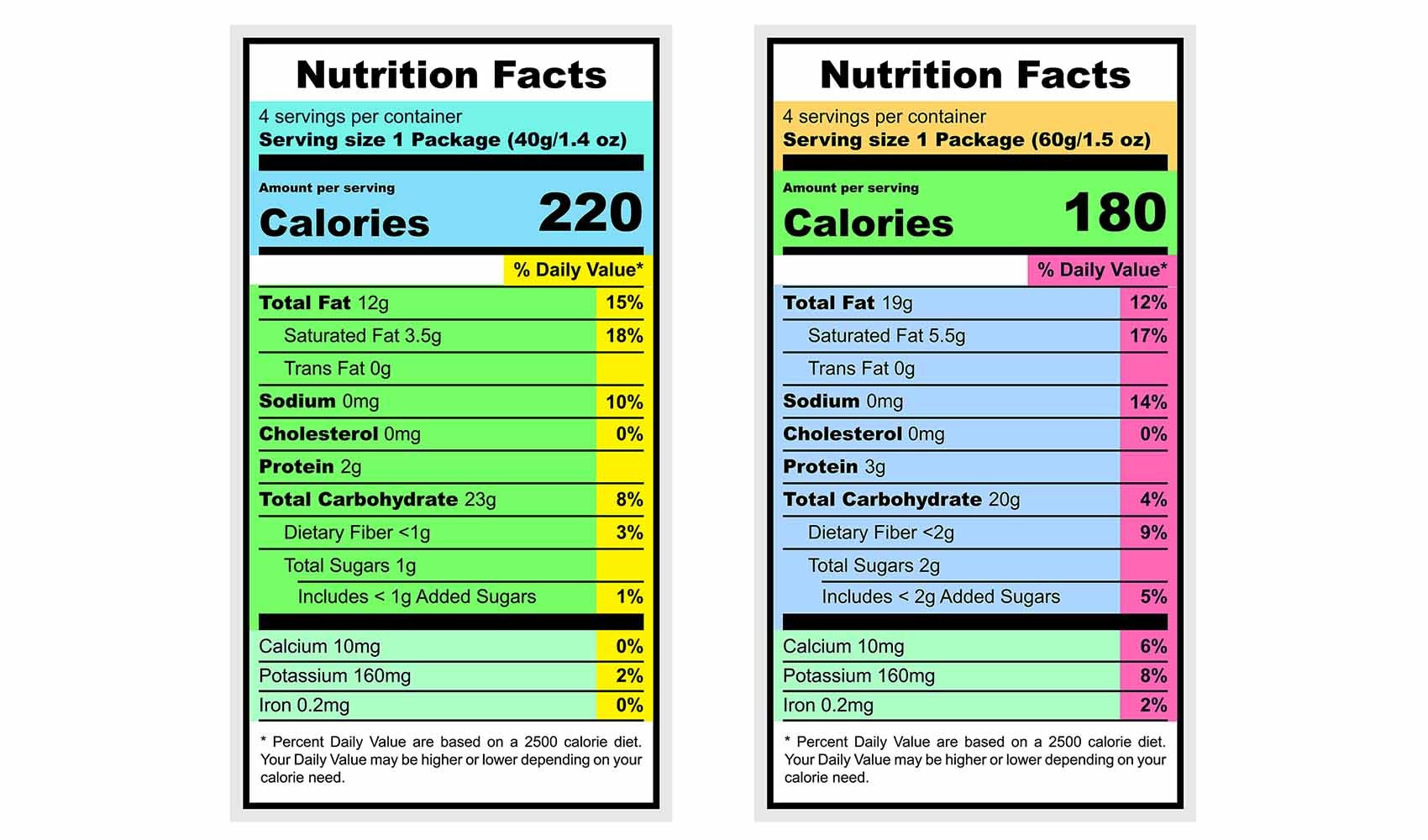 Understanding the Nutritional Information
Understanding the Nutritional Information
Serving Size and Servings Per Container:
Foods can take many shapes and sizes. It’s crucial to grasp the serving size and how many servings are in a container to control what you eat. Let’s make it simple with an example: imagine you have a bag of mixed nuts. Each bag has about 8 servings, with a recommended serving size of 1 handful, roughly 1 ounce of nuts. Now, if someone takes two handfuls, thinking it’s just a small extra snack, they’re actually eating double the nutrients and calories stated on the label. Knowing the serving size and servings per bag helps you enjoy your food while keeping track of what you eat, making it easier to stay healthy and satisfied.
Calories:
Healthier foods can be equally delicious, and it’s crucial to be mindful of the number of calories per serving. For example, a serving of mixed berries contains approximately 80 calories. Consuming two servings means you’re taking in 160 calories.
 Macronutrients
Macronutrients
When it comes to your diet, macronutrients are the building blocks of energy. They include fat, carbohydrates, and protein, and each plays a unique role in supporting your overall health.
Fat
- Total Fat: This includes the sum of all fats in the product, including saturated fats, unsaturated fats, and trans fats.
- Saturated Fat: Saturated fats are usually solid at room temperature and are commonly found in animal products like meat and dairy. High consumption of saturated fats can increase the risk of heart disease.
- Trans Fat: Trans fats are often found in processed and fried foods. These are particularly harmful to heart health and should be avoided as much as possible. Some labels may not include trans fat if the product contains less than 0.5 grams per serving, but it’s still essential to check the ingredient list for partially hydrogenated oils, which indicate the presence of trans fats.
- Unsaturated Fat (Healthy Fat): This includes monounsaturated and polyunsaturated fats. Unsaturated fats are considered heart-healthy and can be found in sources like avocados, nuts, and olive oil. These fats can help reduce the risk of heart disease when consumed in moderation.
Sodium
Sodium, found in many foods, plays a role in maintaining fluid balance and nerve function. However, excessive sodium consumption can lead to high blood pressure, heart disease, and stroke. Choosing products lower in sodium can be essential for your health.
Cholesterol
Cholesterol is a type of fat in your blood, and maintaining healthy cholesterol levels is vital for heart health. When you select products low in cholesterol, you support your cardiovascular well-being.
Carbohydrates
Carbohydrates are the body’s primary source of energy, providing quick fuel for daily activities and exercise. When examining food labels, pay attention to:
- Dietary Fiber: Choose foods with higher dietary fiber content (whole grains, legumes, nuts, seeds, vegetables) for better digestion and to help control blood sugar levels. Fiber also keeps you feeling full for longer.
- Sugars: Limit added sugars in your diet, as excessive sugar intake can lead to health issues such as obesity and tooth decay.
Protein
Protein is essential for various bodily functions, including the growth and repair of tissues, immune system support, and the production of enzymes and hormones. Opt for products that are rich in protein. This macronutrient can help with muscle health and keeping you feeling full. For instance, a 1 cup of cooked quinoa contains approximately 8 grams of protein and is a plant-based source, perfect for a variety of diets.
 Vitamins and Minerals
Vitamins and Minerals
In addition to macronutrients and other factors on a nutrition facts label, vitamins and minerals are essential components to consider. They provide valuable information about a product’s nutritional content. Here’s why they matter:
- Nutrient Variety: Vitamins and minerals are essential for various bodily functions, including immune support, bone health, and overall vitality.
- Dietary Balance: Understanding the vitamin and mineral content in a product helps you ensure you’re consuming a diverse range of essential nutrients.
- Targeted Nutritional Goals: Individuals with specific dietary needs, such as those looking to boost their calcium intake for bone health or increase their vitamin C intake for immune support, can benefit from this information.
% Daily Value (%DV):
The %DV shows you how the nutrient content fits into your daily diet based on a 2,000-calorie-per-day reference. Use %DV to figure out whether a serving of the food is high or low in a specific nutrient. Here’s a general rule:
- If a serving provides 5% DV or less of a nutrient, it’s considered low in that nutrient.
- If a serving offers 20% DV or more of a nutrient, it’s regarded as high in that nutrient.
For example, a cup of broccoli offers 220% of the recommended daily intake of vitamin C.
Understanding Ingredients
When evaluating the healthiness of a product, the ingredient list is a crucial factor to consider. Healthier products often have shorter ingredient lists consisting of natural ingredients, whole components, and they’re typically free from additives, providing various benefits.
The ingredient list offers transparency about what’s included in your product, enabling you to make informed choices and steer clear of unwanted additives or artificial elements.
Take, for instance, a package of healthy granola. It contains whole and simple ingredients such as rolled oats, hazelnuts, pecans, flax seeds, etc. Importantly, this granola is free from additives, ensuring that your dietary choice is wholesome and devoid of unnecessary extras.
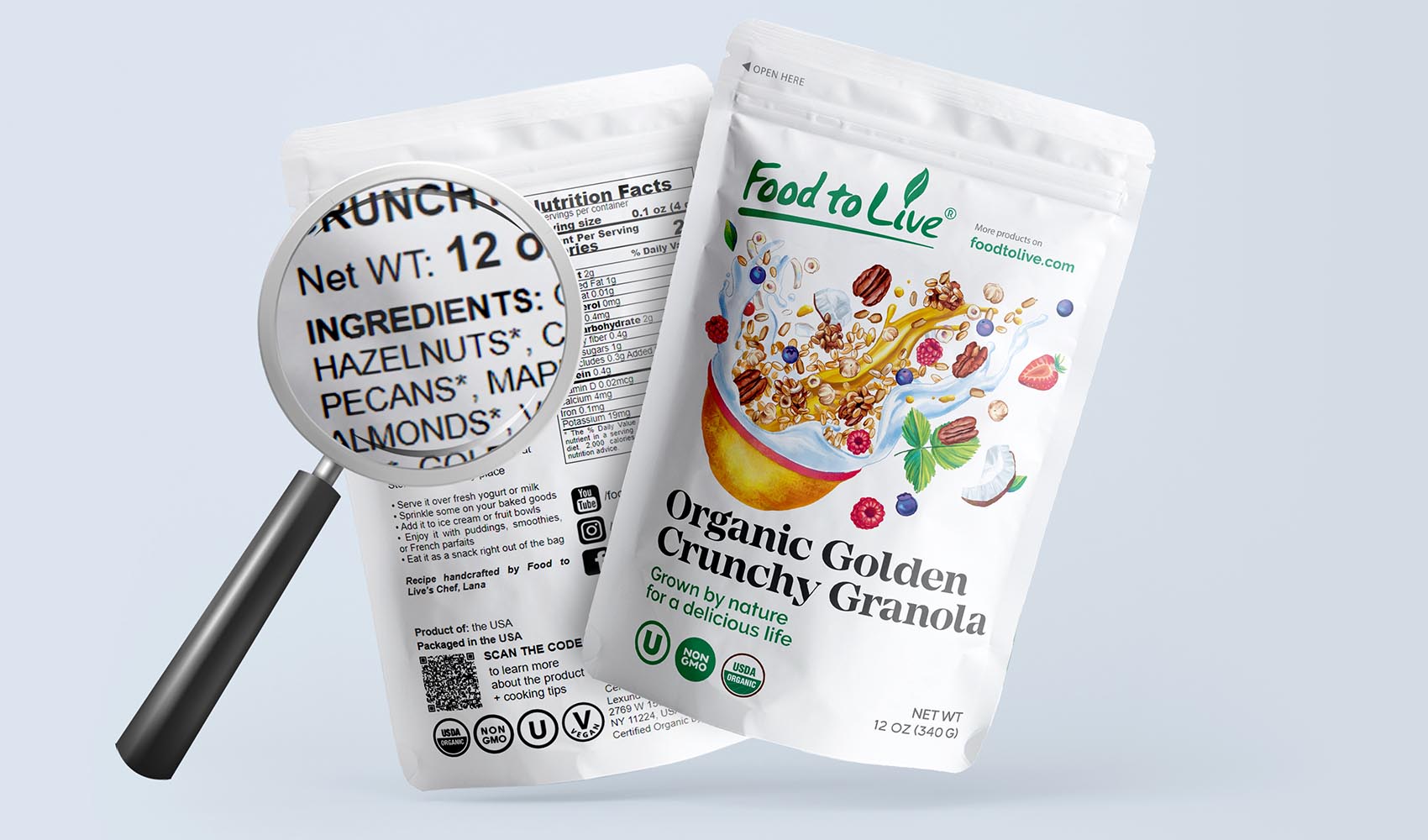
Health Claims:
-
Organic
Organic labeling signifies that the product has been produced using strict organic farming practices. For example, organic fruits and vegetables are grown without synthetic pesticides or herbicides. Organic livestock, for products like organic meat or dairy, are raised without antibiotics or growth hormones. The “USDA Organic” label is your assurance that the product meets the strict organic standards set by the United States Department of Agriculture (USDA) [2]. This certification is recognized nationwide and ensures that organic products have been produced in compliance with rigorous organic farming practices. When you see the USDA Organic label, you can trust that the product has undergone thorough inspection and certification processes to meet the highest organic standards in the United States.
-
Non-GMO
Non-GMO labeling means that the product’s ingredients have not been genetically modified. In the context of food, this usually refers to crops like soy, corn, and canola, which are commonly genetically modified in conventional agriculture. The Non-GMO Project, a widely recognized organization, plays a significant role in verifying and labeling non-GMO products. Manufacturers voluntarily participate in the Non-GMO Project’s verification process, which includes thorough testing and assessment to ensure that their products do not contain genetically modified ingredients [3]. The Non-GMO Project Verified label on a product indicates that it has met these rigorous standards and provides consumers with additional assurance that they are making non-GMO choices.
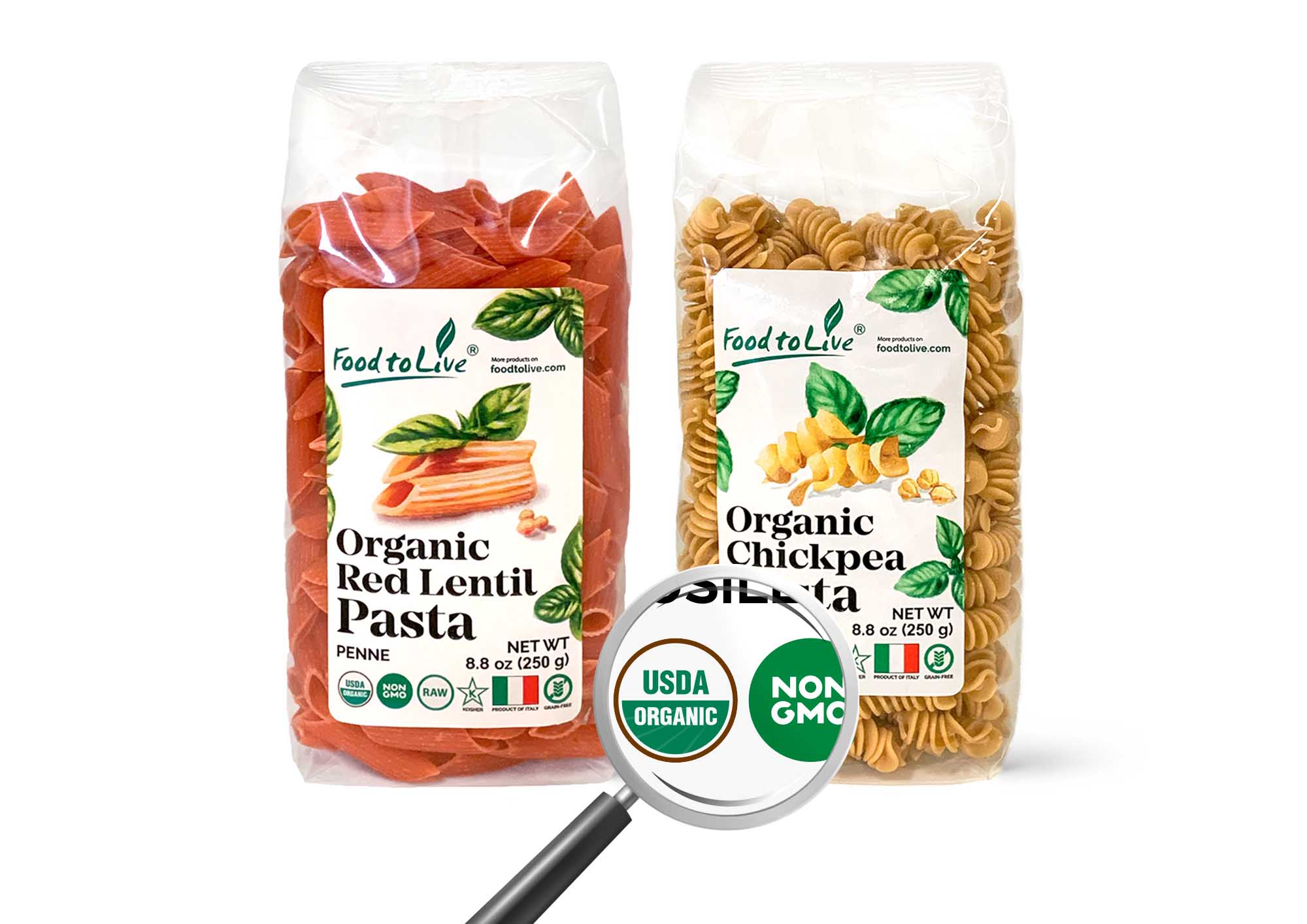
-
Gluten-Free
Gluten-free products, like gluten-free rolled oats, are essential for individuals with celiac disease. Choosing these products ensures they can enjoy favorite food without triggering health issues. Individuals with celiac disease must be vigilant about cross-contamination. Even a trace of gluten can cause health issues. Many gluten-free product manufacturers are dedicated to maintaining strict production processes to prevent cross-contamination.
-
Kosher
Kosher and halal products fulfill the dietary requirements of specific religious and cultural communities, ensuring that individuals can enjoy food while respecting their traditions.
-
Vegan
The “vegan” and “vegetarian” labels on food products provide a straightforward way for individuals to select foods that align with their dietary and ethical preferences. These labels ensure that consumers can confidently make choices that meet their values and lifestyle without the need for extensive ingredient scrutiny. When a label says “vegan,” it means the product does not contain any animal-derived ingredients or by-products and is suitable for a vegan diet.
-
Low-Sodium
Opting for low-sodium products is essential for those looking to manage conditions like high blood pressure and heart or kidney issues, as it helps control sodium intake, a key factor in these health concerns.
In conclusion, learning how to read food labels is like having a map for your food choices. It helps you pick what’s best for your health, diet, and values. Whether you want to eat healthier, follow a specific diet, or manage health issues, food labels are your guides. So, pay attention to those labels, make smart choices, and enjoy your food journey with confidence!
Sources
- https://www.fda.gov/food/nutrition-facts-label/whats-nutrition-facts-label
- https://www.ams.usda.gov/services/organic-certification
- https://www.nongmoproject.org/find-non-gmo/



